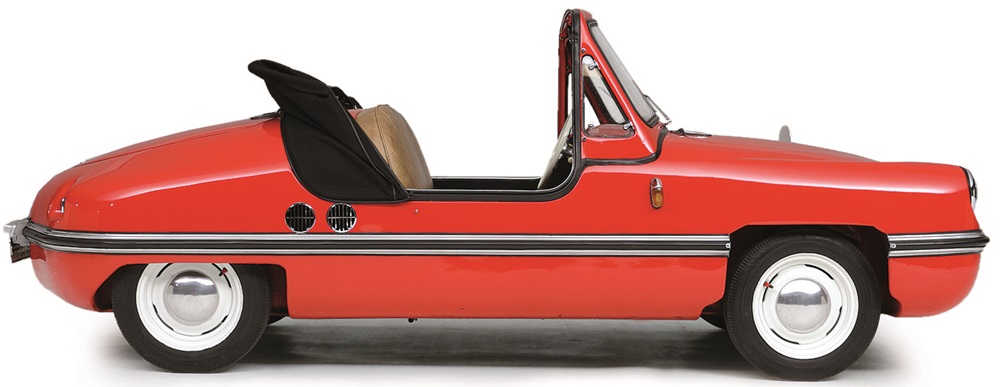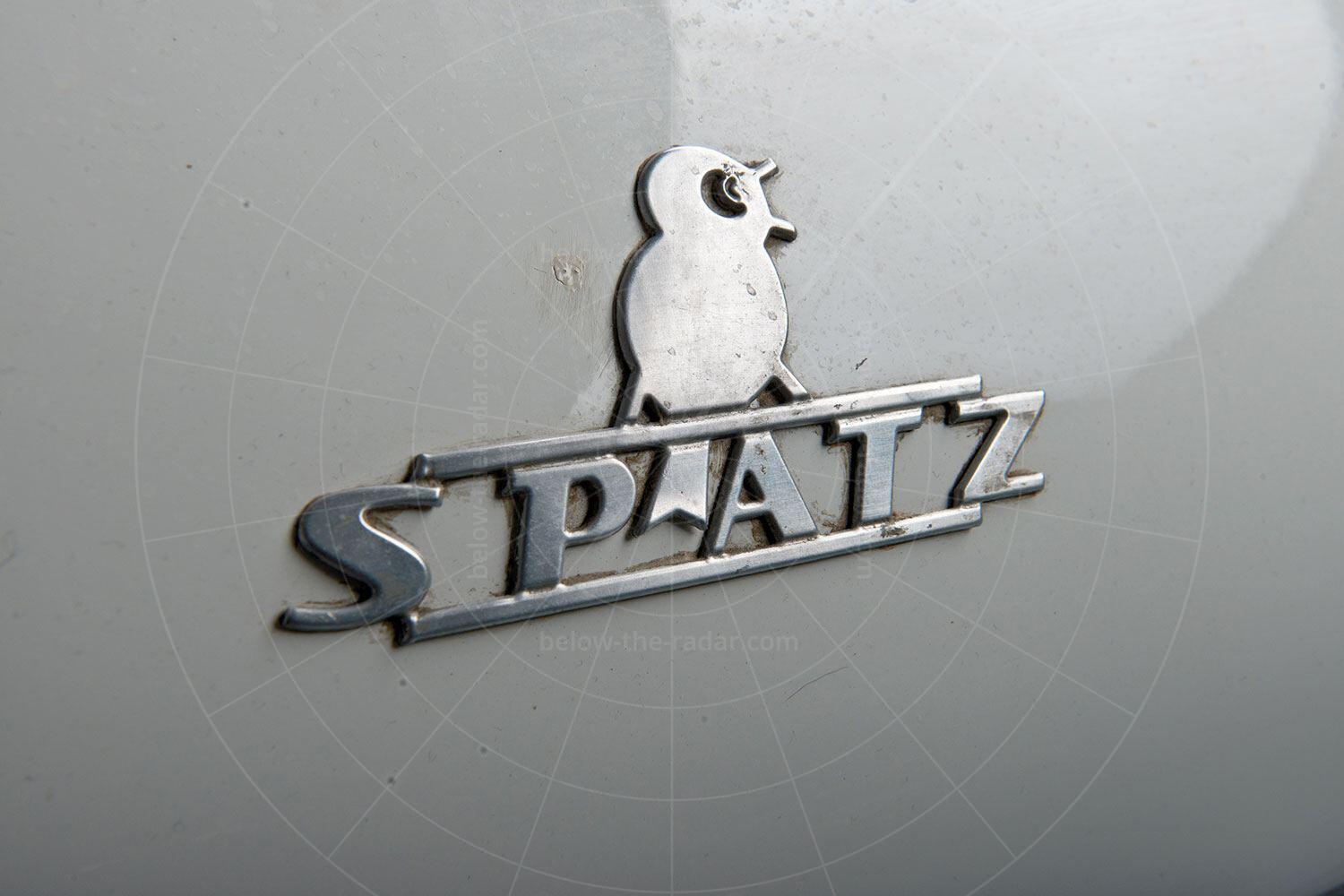1956 Spatz Micro Car

The descriptions of the Classic Cars in the Directory were partly generated or supplemented with the help of artificial intelligence (AI). The content may occasionally not always be entirely accurate or factually correct despite careful checking.
The Spatz Micro car of 1956 was a revolutionary vehicle for its time, showcasing a host of technical advancements and features that set it apart from other cars on the market.
At its core, the Spatz Micro car was powered by a single-cylinder, two-stroke engine that was capable of producing 9 horsepower at 5000 RPM. While this may not seem like much by today's standards, it was more than sufficient to propel the car to a top speed of 50 miles per hour.
One of the most notable technical features of the Spatz Micro car was its lightweight construction. With a curb weight of just 420 pounds, the vehicle was able to achieve impressive fuel efficiency and maneuverability on the road. This was due in part to its tubular steel frame, fiberglass body, and minimalistic design.
The Spatz Micro car also featured a number of safety innovations that were ahead of their time. For example, the car was equipped with a roll bar that helped protect occupants in the event of a rollover accident. It also had hydraulic brakes, which provided greater stopping power and control than other cars that still relied on mechanical brakes.
Inside the Spatz Micro car, there were a number of technical advancements that made the driving experience more comfortable and convenient. The car had a heater and defroster, which helped keep the cabin warm and clear of condensation in colder weather. It also had adjustable bucket seats that could be positioned to fit taller or shorter drivers.
Perhaps most impressive of all, the Spatz Micro car also had a unique hydraulic suspension system that allowed it to handle bumps and rough roads with ease. This system consisted of a set of hydraulic cylinders and accumulators that would absorb shocks and vibrations from the road, providing a smooth and comfortable ride for passengers.
Overall, the Spatz Micro car of 1956 was a technical marvel that showcased the ingenuity and creativity of its designers. From its lightweight construction and safety features to its innovative suspension and comfort amenities, this car was ahead of its time in many ways and remains a fascinating piece of automotive history to this day.
Milestones
- 1956: The Spatz Micro car was first introduced and manufactured in Germany. - The car was designed by German engineer Josef Ganz, who also designed the Standard Superior car. - The Spatz had a 191cc single-cylinder engine, which generated 9.5 horsepower and a top speed of approximately 50 miles per hour. - The car had a unique design, with a body made of sheet metal and a chassis made of pressed steel. - The Spatz was small, measuring only 9 feet long and 4 feet wide, with seating for two passengers. - The car had several safety features, including a roll cage, a padded dashboard, and safety glass windows. - The Spatz was marketed as an affordable and efficient vehicle, ideal for urban commuting and short journeys. - Despite its favourable features, the Spatz sold poorly and was eventually discontinued due to stiff competition from similar micro cars like the BMW Isetta and the Messerschmitt KR200.Technical
- The Spatz Micro Car was produced in Germany from 1954 to 1958. - It was powered by a 191cc Fichtel & Sachs two-stroke engine, giving it a top speed of around 50 km/h (30 mph). - The car used a unique independent suspension system, with trailing arms and coil springs at the rear, and a swing axle and leaf springs at the front. - It had a three-speed manual gearbox with a dog clutch for quick and easy gear changes. - The body was a simple and lightweight construction, with a tubular steel frame covered in aluminium and fibreglass panels. - The Spatz had room for two passengers, with basic seating and a simple dashboard with just a speedometer and fuel gauge. - Fuel consumption was around 3-4 litres per 100 km (70-90 mpg), making it a very economical vehicle. - Due to its small size and low weight (just 270 kg / 595 lbs), the Spatz was exempt from many road taxes and regulations in Germany. - The car was only produced in limited numbers, with estimates ranging from 200 to 500 units. - Today, the Spatz Micro Car is a highly sought-after collector's item, with examples selling for tens of thousands of dollars at auction.